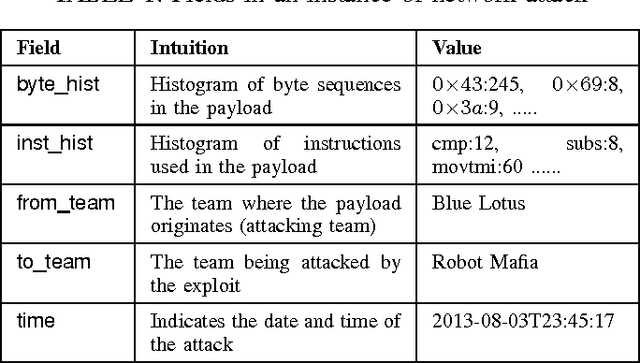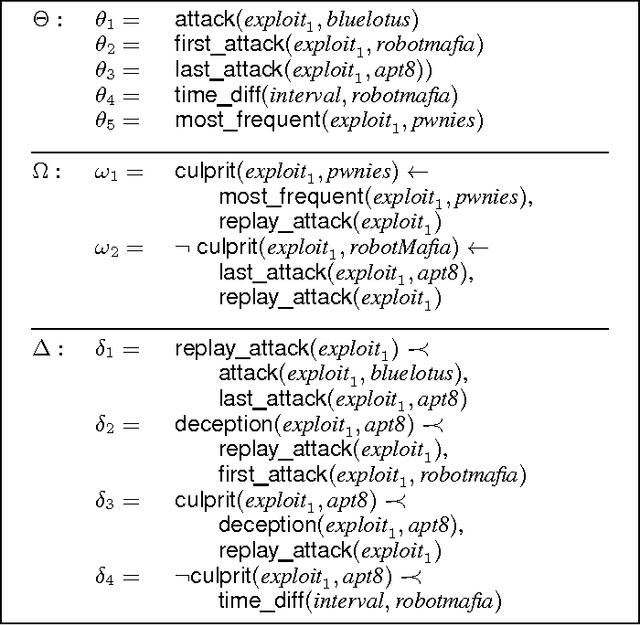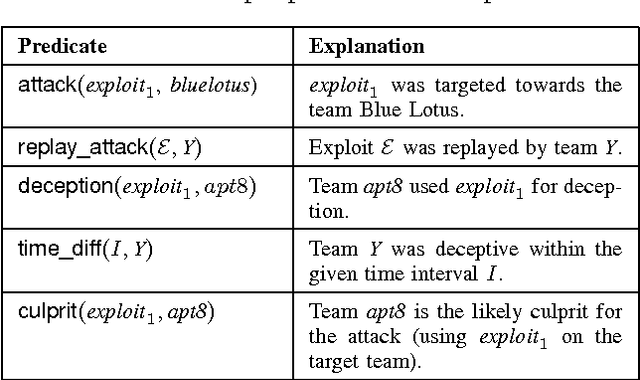Eric Nunes
DARKMENTION: A Deployed System to Predict Enterprise-Targeted External Cyberattacks
Oct 30, 2018



Abstract:Recent incidents of data breaches call for organizations to proactively identify cyber attacks on their systems. Darkweb/Deepweb (D2web) forums and marketplaces provide environments where hackers anonymously discuss existing vulnerabilities and commercialize malicious software to exploit those vulnerabilities. These platforms offer security practitioners a threat intelligence environment that allows to mine for patterns related to organization-targeted cyber attacks. In this paper, we describe a system (called DARKMENTION) that learns association rules correlating indicators of attacks from D2web to real-world cyber incidents. Using the learned rules, DARKMENTION generates and submits warnings to a Security Operations Center (SOC) prior to attacks. Our goal was to design a system that automatically generates enterprise-targeted warnings that are timely, actionable, accurate, and transparent. We show that DARKMENTION meets our goal. In particular, we show that it outperforms baseline systems that attempt to generate warnings of cyber attacks related to two enterprises with an average increase in F1 score of about 45% and 57%. Additionally, DARKMENTION was deployed as part of a larger system that is built under a contract with the IARPA Cyber-attack Automated Unconventional Sensor Environment (CAUSE) program. It is actively producing warnings that precede attacks by an average of 3 days.
Darknet and Deepnet Mining for Proactive Cybersecurity Threat Intelligence
Jul 28, 2016



Abstract:In this paper, we present an operational system for cyber threat intelligence gathering from various social platforms on the Internet particularly sites on the darknet and deepnet. We focus our attention to collecting information from hacker forum discussions and marketplaces offering products and services focusing on malicious hacking. We have developed an operational system for obtaining information from these sites for the purposes of identifying emerging cyber threats. Currently, this system collects on average 305 high-quality cyber threat warnings each week. These threat warnings include information on newly developed malware and exploits that have not yet been deployed in a cyber-attack. This provides a significant service to cyber-defenders. The system is significantly augmented through the use of various data mining and machine learning techniques. With the use of machine learning models, we are able to recall 92% of products in marketplaces and 80% of discussions on forums relating to malicious hacking with high precision. We perform preliminary analysis on the data collected, demonstrating its application to aid a security expert for better threat analysis.
Argumentation Models for Cyber Attribution
Jul 07, 2016



Abstract:A major challenge in cyber-threat analysis is combining information from different sources to find the person or the group responsible for the cyber-attack. It is one of the most important technical and policy challenges in cyber-security. The lack of ground truth for an individual responsible for an attack has limited previous studies. In this paper, we take a first step towards overcoming this limitation by building a dataset from the capture-the-flag event held at DEFCON, and propose an argumentation model based on a formal reasoning framework called DeLP (Defeasible Logic Programming) designed to aid an analyst in attributing a cyber-attack. We build models from latent variables to reduce the search space of culprits (attackers), and show that this reduction significantly improves the performance of classification-based approaches from 37% to 62% in identifying the attacker.
 Add to Chrome
Add to Chrome Add to Firefox
Add to Firefox Add to Edge
Add to Edge